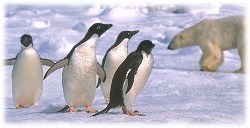 |
What's wrong with this picture?
Penguins don't live in the Arctic, and there are no polar bears in Antarctica. So it's impossible for polar bears to eat penguins, or - as in the Coca-Cola® commercials - dance or play with them! |
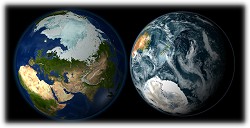 |
"I just got back from the Antarctic."
"Oh, really? What's it like up there?"
Antarctica is at the south of our planet ("down there") and it's the Arctic that's "up North." |
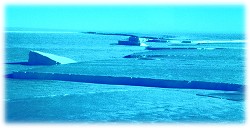 |
The Arctic and Antarctica are pretty much alike: icy, desolate wilderness where nothing lives.
In fact, the Arctic is an ocean, surrounded by land, covered - in winter - by sea ice no more than three meters thick. Antarctica is a continent, land covered by ice sometimes almost three miles deep. |
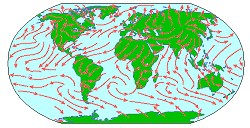 |
The Poles are remote, distant and don't much matter to how we live our lives.
Well, the Poles are indeed remote and distant, but they're an essential component in the entire Earth system, affecting the circulation of the oceans and helping to keep earth's climate in balance. And changes in the glaciers of Greenland and the ice sheets of West Antarctica could affect sea level everywhere on the planet. |
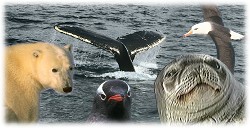 |
Nothing lives at the Poles.
The lands surrounding the Arctic Ocean are full of life, animal, plant and human. Four million people now live north of the Arctic Circle, and many of their cultures have adapted successfully over many millennia to the extreme conditions found there. And the Southern Oceans, in fact, come energetically back to life when light returns after six months of darkness: at that time of year, Antarctic waters are more productive than those of the Tropics. Microscopic plants feed billions of tiny shrimp called krill, which in turn are food for penguins, seals and whales. Life at the Poles behaves very differently from life in mid-latitudes, but there's lots of it. It is true that extreme conditions in Antarctica mean it never had an indigenous human population. Today 4,000 scientists and support staff visit each southern summer, with only a few hundred wintering over at the research stations. |
 |
Polar regions are dark, frozen places all year long, in perpetual winter.
Like everywhere on Earth, the Poles have six months of darkness and six months of night. What's different is that instead of having day and night alternating every 24 hours (as it is for most of Earth's inhabitants with the "six months of darkness" spread out over a full year), the Poles have their days and nights back to back, with six continuous months of darkness followed by six continuous months of "day." The mid-latitudes experience four seasons, but some say the Tropics (such as the Amazon rainforest) only have "wet" and "dry" seasons. You could argue that instead of seasons the Poles have only "day" and "night", with each lasting six months long. |
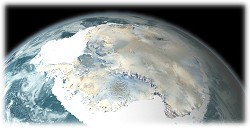 |
Antarctica is a small continent, since it's just a little strip at the bottom of the map.
Antarctica, in fact, is the fifth largest continent at 13,209,000 squ km, larger than Europe (9,938,000) and Australia (7,687,000). Looking down at "The Ice" from space, as in NASA satellite views, you have a much better appreciation that only using traditional map projections. |
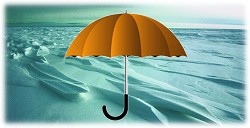 |
Because of all that snow and ice, there's lots of precipitation at the Poles.
In fact, less than an inch of precipitation falls at the South Pole: Antarctica is a dry, frozen desert. Some regions of the Arctic are also desert: it's too cold and dry to snow. When you see "snow" it's often pre-existing precipitation being blown around. |
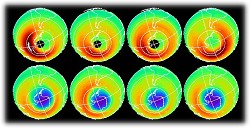 |
The Poles are so far away, nothing we (living in more temperate, low latitude nations) do can ever affect them.
The Antarctic ozone hole, discovered in the early 1980s, was powered by chemical interactions following the release of substances called chlorofluorocarbons (CFCs) which were widely used in refrigerators and aerosol spray cans. Snow at Summit Station, Greenland, one of the highest and remotest places in the Arctic, in fact, shows traces of chemicals from all across the Northern hemisphere. What we, in the industrialized world, do, affects the Poles. And when we change our behavior, as happened with the ban on CFCs through the Montreal Protocol of 1989, we also affect the Poles, this time in a positive way. |
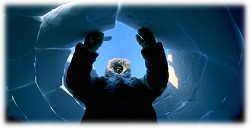 |
"Eskimos" live in "igloos."
Well, this is half right, but two of the four words are questionable. Arctic residents of Alaska and Siberia prefer to be called Inupiaq and Yupik rather than "Eskimo", and the Inuit-speaking peoples of Arctic Canada and Greenland call themselves Inuit. But none of them live in igloos all the time, although they're still used as emergency shelters when far from home, hunting or traveling. Most people of the Arctic now live in structures similar to those in more temperate climes. |
|












